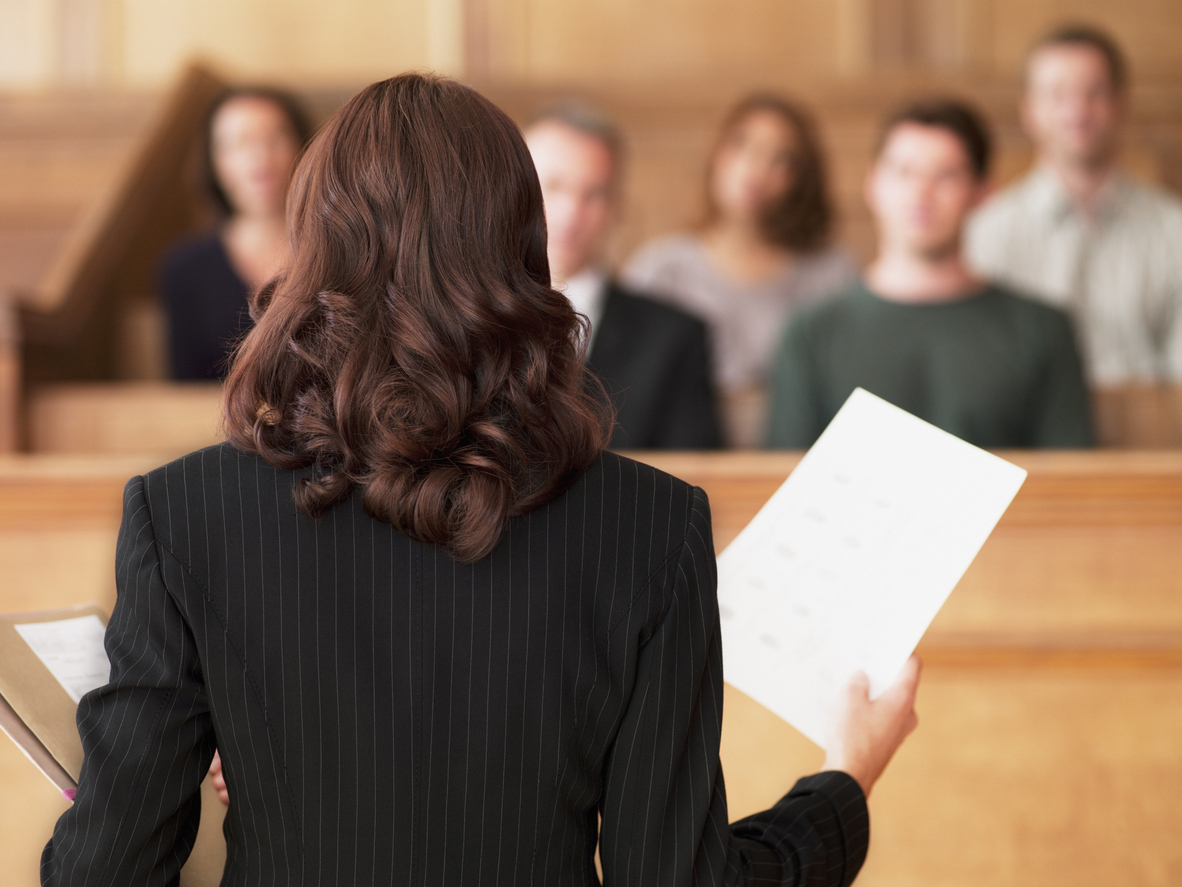The Tools Of Trial Advocacy: The Opening Statement

A good opening statement is an effective trial advocacy tool. It carries a theme and tells a story that grabs the attention of the jury. Although the purpose of an opening statement is not to argue the case, it is nonetheless an attorney advocate’s first opportunity to persuade the jury. Objectively, there are some tips a trial lawyer can use to formulate an effective opening statement. Subjectively, advocates must find and develop those unique aspects of their personality, whether a strong voice or effective speaking style, etc., that will help them present a good opening statement.
Jurors often base their final decisions about guilt or liability on the opening statements of a trial. Attorneys must make jurors feel like they are being spoken to directly, one-on-one. An attorney-advocate must look jury members in the eye and speak to them candidly and openly during the opening statement. A lawyer should never read an opening statement and should only use notes or an outline sparingly. Attorney-advocates should not use the podium as a shield to hide from the jury.
What is the purpose of an opening statement?
An opening statement informs the jury of what it will hear during the case. It summarizes the evidence and what the evidence will prove over the course of the trial rather than arguing the case. This argument occurs during the closing statement after both parties present their evidence. This is a key starting point for any opening statement – it must be limited to the facts as they will be proven by the evidence and cannot be argumentative.
What is a good opening statement?
While an opening statement should not be argumentative, a good opening statement presents the facts in a sequence that advances the conclusion. When used properly, timing can allow the facts to speak for themselves and infer a specific conclusion. Advocates must activate the senses of jury members using metaphors and colorful, descriptive language that makes them feel like they experienced the situation as the client did in real life. A good opening provides jurors with a logical memory chip for later recall and consideration.
An effective opening that tells a gripping, meaningful story helps attorneys connect with jury members. It uses plain, simple language but is well-organized and concise. The jury needs to understand precisely what an attorney-advocate is trying to communicate. Leaving jurors confused after an opening statement is a bad way to start any trial.
Any attorney presenting an opening statement must place a client in the best possible light. An advocate must recant the facts as a story that compels the jury to want to decide in favor of a client. The opening statement should be concluded with a statement telling the jury that, after hearing all the favorable evidence presented on behalf of a client’s position, the jury will find accordingly.
Discussions with legendary trial attorneys, F. Lee Bailey and Gerry Spence, inspired founders John Patrick Dolan and Irene Garcia Dolan to start the California Desert Trial Academy. In 2012, CDTA opened its doors featuring a more practical and modern approach to legal education. At CDTA, not only do we train, educate, and develop students to be exceptional attorneys, we also train them to be exceptional trial advocates. Call us today at (760) 342-0900 or find out more online here.


